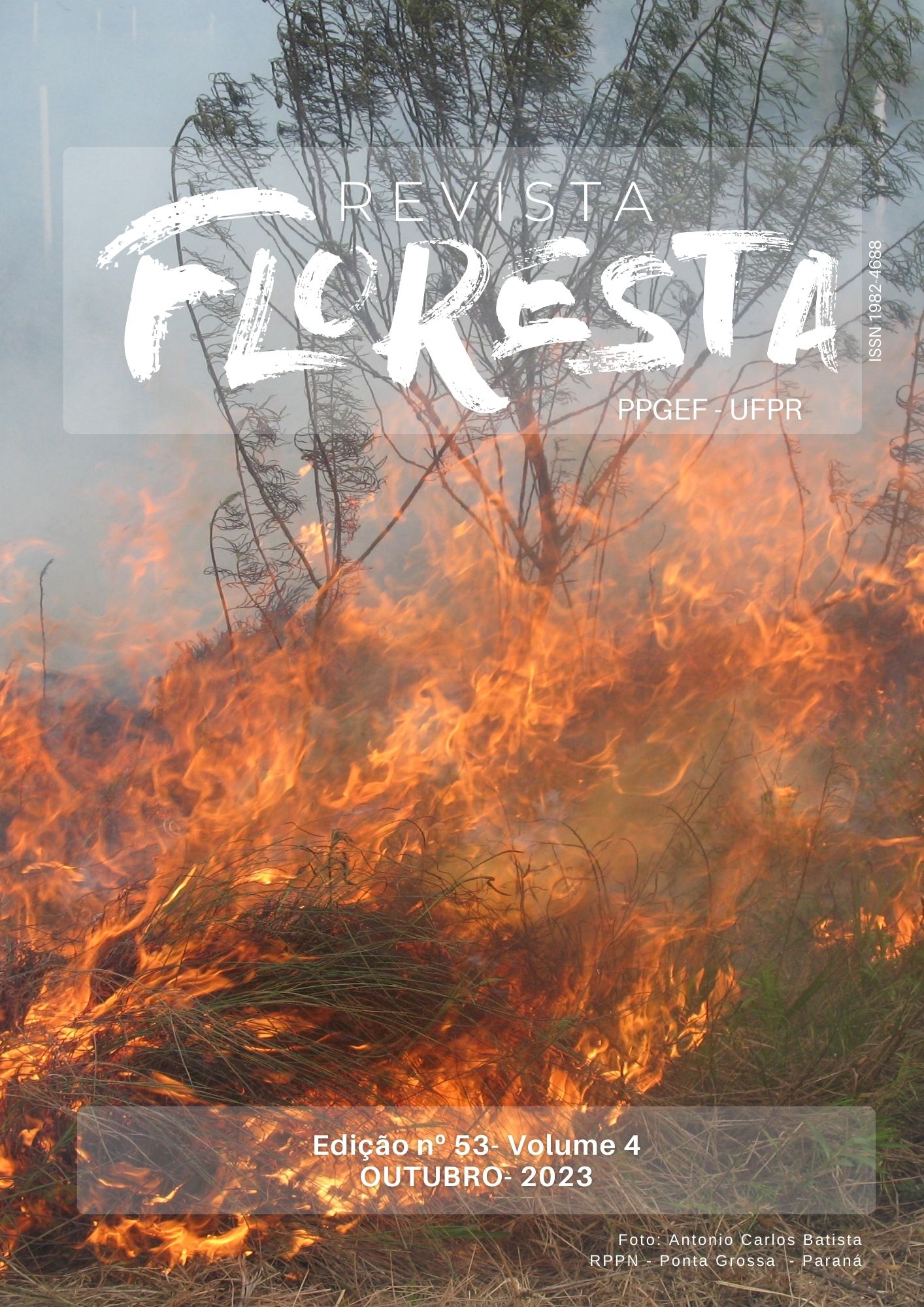FEASIBILITY OF USING Zanthoxylum ekmanii (Urb.) Alain FOR PLYWOOD PANEL PRODUCTION
DOI:
https://doi.org/10.5380/rf.v53i4.83446Palavras-chave:
Lemon, Cleared, veneer composition, urea-formaldehyde, phenol-formaldehyde.Resumo
Feasibility of using Zanthoxylum ekmanii (Urb.) Alain for plywood panel production.The demand for wood-based products by society is growing because these products are less restrictive, highly resistant, and reliable in use. However, due to a lack of technological knowledge, the number of Amazonian species used within the timber industries is still limited. Therefore, knowing the potential use of these species is important to the forestry sector’s development. In this context, this study aimed to evaluate the physical and mechanical properties of plywood panels produced with veneer sheets of Zanthoxylum ekmanii (lemon) and its combination with Pinus sp., using the urea-formaldehyde (UF) and (PF) phenol-formaldehyde resins. Panels were produced with 15 mm, dimensions of 50 x 50 cm, and a grammage of 360 g/m2 in a single line. Physical and mechanical tests were performed by the specifications described in the Brazilian standards. The results were compared to the requirements of the ABIMCI technical catalog and the NBR ISO 12466-2 standard. The homogeneous and combined panels with Z. ekmanii evaluated in this study presented results of water absorption, thickness swelling, compression set recovery, glue line shear strength, and parallel and perpendicular static bending statistically equal to or superior to the reference species (Pinus sp.). Therefore, the panels produced with Z. ekmanii have good quality in bonding with UF and PF resins. This species can be used in the production of homogeneous plywood or combination with Pinus sp.
Downloads
Publicado
Como Citar
Edição
Seção
Licença
Direitos Autorais para artigos publicados nesta revista são do autor, com direitos de primeira publicação para a revista. Em virtude da aparecerem nesta revista de acesso público, os artigos são de uso gratuito, com atribuições próprias, em aplicações educacionais e não-comerciais.A revista, seguindo a recomendações do movimento Acesso Aberto, proporciona acesso publico a todo o seu conteudo, seguindo o principio de que tornar gratuito o acesso a pesquisas gera um maior intrcambio global de conhecimento.
Conteúdos do periódico licenciados sob uma CC BY-NC-SA 4.0



